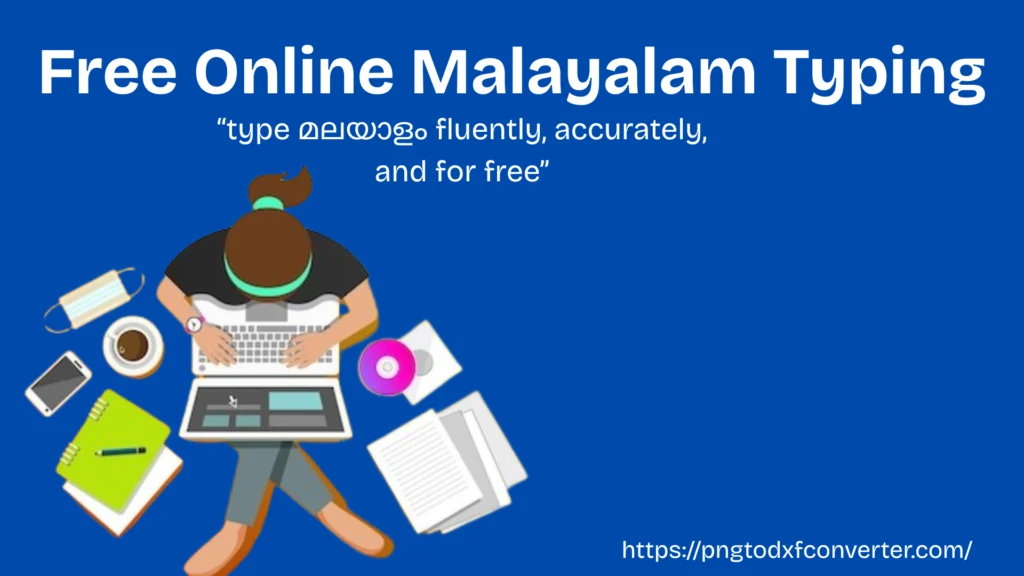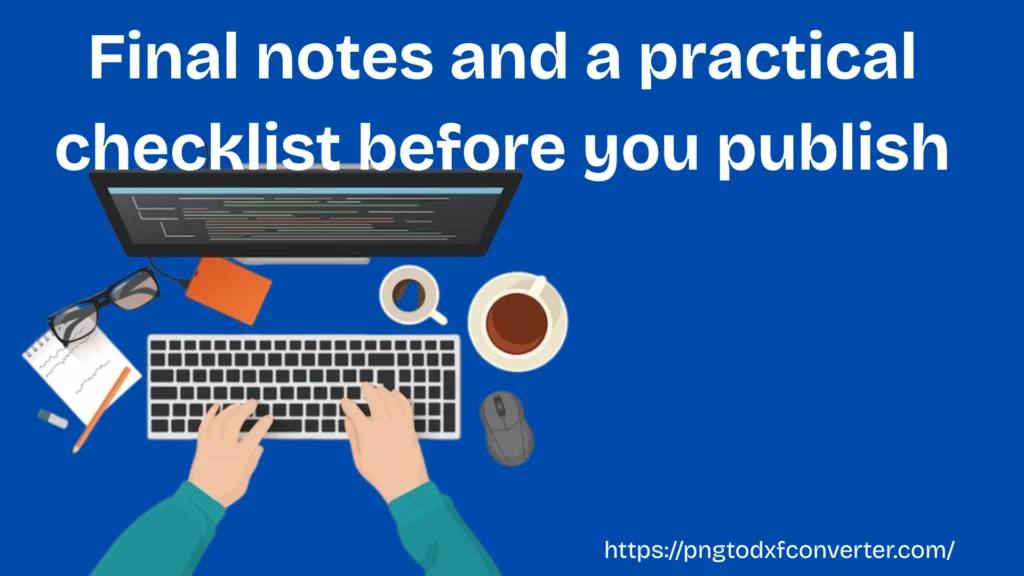
Writing in Malayalam on a computer or phone should feel as natural as speaking it. For many people, the barrier has not been desire but usability: unfamiliar keyboard layouts, inconsistent fonts, and clumsy conversion tools have made Malayalam typing feel fragile. Today, with Unicode, robust web based converters, mobile Manglish keyboards, and free downloadable utilities, anyone can do Malayalam typing online reliably. This longform article explains how to type Malayalam cleanly and confidently, describes the most practical free tools, walks through real world workflows, and addresses the persistent problems that still catch writers off guard. I have integrated the keyword phrases you provided naturally throughout the article, from Malayalam to English conversions and English to Malayalam typing google style converters to recommendations for Malayalam keyboard download, typing Malayalam font, typing Baba Malayalam online, typing master online, and common tutor and practice apps like Kuku typing and typing monkey. Read this as a single, polished resource you can rely on when you need to produce Malayalam content quickly and correctly.
Why accurate, free online Malayalam typing still matters
Malayalam is a living language with millions of speakers, a rich literary tradition, and a fast growing presence on the internet. Users want to publish local news, blog posts, social updates, academic writing, and official communications in Malayalam. If typing and display are difficult, native language participation declines. Free, accessible tools democratize content creation: a student, a local journalist, or a senior relative should be able to write in Malayalam without hunting for paid software or complicated installers.
Historically, Malayalam used proprietary fonts and legacy encodings that locked content into a single machine. Unicode solved that by giving each Malayalam character a standard codepoint so text written on one device can display correctly on another. But Unicode is only the foundation; the rest depends on input methods (how you type), rendering (which font displays the glyphs), and user workflows. This article focuses on input and workflows while giving practical notes about fonts and publishing so your Malayalam shows up correctly everywhere.
Four input approaches that actually work
There are four practical ways people type Malayalam today. Each has strengths; the smartest writers use more than one method depending on the task and device.
1. Transliteration (Manglish = Malayalam typing)
Transliteration is the easiest on ramp. You type Malayalam words using Roman letters (often called Manglish) and the converter turns them into Malayalam script. For casual messages, social posts, and quick drafts, this is the fastest route. Many people expect a Google Malayalam typing experience where typing a Roman word and pressing space converts it instantly. The quality depends on the transliteration engine’s dictionary and its tolerance for informal Romanization.
Transliteration tools are often labeled “English to Malayalam typing Google style” or “Manglish to Malayalam typing.” They are forgiving of varying spellings and present alternate suggestions if a mapping is ambiguous. For example, typing namaskaram should render നമസ്കാരം; if the engine is unsure, it will show alternatives and you pick the correct one.
2. Native keyboard layouts (InScript and phonetic layouts)
Native layouts, such as InScrip, map Malayalam characters directly onto keyboard keys. Once you learn the mapping, typing speed can surpass transliteration for longform work because you are not correcting conversions. Native layouts are common in formal publishing, academic typing, and legal documentation, where precise control over ligatures (including chillus and conjuncts) is necessary.
For many professionals, installing a Malayalam typing keyboard in a computer (system layout) and using a typing tutor improves speed and accuracy. This is where tools such as typing master online and typing master download can support learning the layout.
3. Voice typing
Voice to text Malayalam is improving. Mobile keyboards and some web tools let you speak in Malayalam and transcribe it to text. This can dramatically speed up initial drafts and notes. Still, voice generated text typically requires manual cleanup, punctuation, orthographic particulars, or names might need correction. Voice typing complements transliteration and native layouts rather than replacing them.
4. Handwriting and gesture input
On tablets or touch devices, handwriting input recognizes drawn characters. This is convenient for inserting rare characters or for learners who recall shapes better than key mappings. It’s not optimal for long articles, but it remains a useful accessibility route.

The best free tools and what to use them for
Below are practical, free options you can use right now. I’ve grouped them by the common tasks people actually do.
Quick one off typing: browser transliteration boxes
If you want to write a comment, post, or quick email, open a browser based transliteration box. These are often labeled as Malayalam typing online, English to Malayalam typing Google style, or typing Malayalam online. They let you type Manglish and convert on the fly. The output is copy/paste friendly for posting anywhere.
When you search for phrases like typing baba malayalam online or typing baba malayalam app, you’ll notice several web editors (one commonly known is TypingBaba) that offer large editing areas and alternate word suggestions. These editors are reliable for social posting and for composing longer drafts before you paste them into your content management system.
System wide typing: downloadable utilities and keyboard installers
For people who work in Word, email, or a local desktop CMS, a downloadable utility that provides system wide transliteration is ideal. These tools let you select a Malayalam keyboard on Windows or macOS so you can type Malayalam in any application. If users search for Malayalam keyboard download or typing Malayalam download, they typically want installers or apps to enable Malayalam typing across the system.
Azhagi style utilities and several community maintained packages give you this capability for free. Once installed, you can type in any program without the copy/paste loop.
Mobile first workflows: Manglish keyboards and apps
Mobile keyboards for Android and iOS now handle Manglish to Malayalam typing seamlessly. Users install a Malayalam keyboard app, enable it as the system keyboard, and type Manglish anywhere on WhatsApp, Facebook, Instagram, and email, and get Malayalam output. These apps usually support voice input, handwriting, and rich predictive suggestions to speed up typing.
If your audience is heavy on mobile, recommend a trusted Manglish keyboard and include instructions in your help pages under search terms like Malayalam Keyboard download and Malayalam typing on computer (for cross device clarity).
Precise control and publishing: native layout + fonts
When you need precise orthography for academic papers, legal text, or content that must strictly adhere to orthographic norms, use a native Malayalam layout (InScript) and a trusted Malayalam Unicode font (Meera, Rachana). Installing a Malayalam typing keyboard in the computer via OS settings and pairing it with a robust editor gives fine grained control of ZWJ and ZWNJ behavior, so ligatures render correctly.
Training and speed building: typing tutors and typing games
If you want to increase speed on a native layout, use tutor software and lightweight drills. People search terms such as typing master online, typing master download, typing master for mobile, and typing master 7 free download when they want to train. Typing tutor apps help build muscle memory for InScript or other layouts. Gamified options like typing monkey, kuku typing, and typing race make practice less tedious and build finger fluency faster.
Troubleshooting real problems and exact fixes
Even with Unicode and good tools, you will encounter display or conversion issues. Here’s a problem and fix list that solves what most users encounter in practice.
Problem: Malayalam displays as boxes, question marks, or broken text
Cause: The Reader device lacks a proper Unicode Malayalam font or uses a buggy fallback.
Fix: Bundle or recommend a robust Unicode font (Meera and Rachana are well tested), or serve a web font. If you manage a website, include a fallback stack and a small help link with instructions: “If Malayalam appears broken, install the Meera font.”Problem: Transliteration produces the wrong Malayalam word
Cause: Ambiguous Roman input or poor dictionary mapping.
Fix: Choose the alternative from the suggestions dropdown that the converter provides. If the tool lacks alternatives, try re spelling the Roman input (for example, njaan vs njan). For formal work, run the draft through another engine to compare outputs.Problem: Ligatures break after editing mid word
Cause: Zero width joiner (ZWJ) or zero width non joiner (ZWNJ) handling got disrupted when you inserted or deleted characters.
Fix: Retype the syllable or use an editor that exposes ZWJ/ZWNJ insertion. For publishing, preview the final page in multiple browsers and re export where needed.Problem: Slow performance on very large drafts
Fix: Draft locally in a plain text editor and convert in reasonable chunks. For heavy daily workloads, prefer a desktop transliteration utility rather than a browser widget.
Problem: Mixed English terms auto convert to Malayalam
Fix: Use a tool that supports inline English tokens or toggle language mode when typing proper nouns and technical terms. This avoids undesirable transliteration of brand names or acronyms.
Practical, copy ready workflows for different goals
Below are workflows you can follow immediately for common tasks.
A. Quick social post or chat (fastest)
- Open a browser transliteration box labeled Malayalam typing online or a mobile Manglish keyboard.
- Type in Manglish. Accept suggested completions.
- Copy and paste into the social app or press send on mobile.
This is ideal for users searching for “free online Malayalam typing” or “typing Malayalam online”.
B. Publish a blog post
- Draft in your favorite editor or keep a Roman draft saved.
- Run the draft through a reliable transliteration editor (TypingBaba, TechWelkin). Select alternate words where ambiguous.
- Paste the Malayalam text into your CMS.
- Embed a recommended Unicode font or instruct readers to install one.
- Proofread or have a native reviewer check orthography before publishing.
When people search “English to Malayalam typing Google,” they want that instant, space to convert behavior, include a demo,o or mention that your tool mimics this flow.
C. Legal, academic, or official documents
- Use a native keyboard layout (InScript) or a desktop utility that supports explicit ZWJ/ZWNJ handling.
- Type directly into the application (Word, LibreOffice) using the system keyboard layout.
- Have a native speaker verify specialized conjuncts and chillus.
D. Mobile first content creation
- Install a Manglish keyboard app and enable voice typing for fast drafts.
- Edit for punctuation and special conjunctions.
- Post directly from the app.
If your audience prefers mobile, make sure your site instructions include “Malayalam Keyboard download” for Android and iOS.

Fonts, rendering engines, and publishing tips
A Malayalam article that looks perfect on your machine can break for readers if fonts or rendering are inconsistent. Here are decisive steps to stop that from happening.
- Use Unicode fonts and recommend them: Meera and Rachana are stable and widely available. Provide download or installation instructions labeled “Malayalam keyboard download” and “typing Malayalam font” where appropriate.
- Serve web fonts for guaranteed look: If licensing allows, serve a web font so readers get the correct glyphs regardless of local installs.
- Test on Android and iOS: Mobile rendering differs from desktop. Check the final page on common devices.
- Avoid obsolete encodings: If you encounter legacy non Unicode text, convert it using a reliable converter before publishing.
Accessibility and inclusion
Design Malayalam typing experiences to be inclusive:
- Offer multiple input modes: transliteration for speed, native layout for precision, voice for accessibility, and handwriting for learners.
- Make input boxes screen reader friendly and ensure suggestion dropdowns are keyboard accessible.
- Provide help links that explain how to install a Malayalam font or enable a keyboard on Android and iOS. These details matter for older users and those with limited technical confidence.
Training and practice: tools that make you faster
If you use a native layout, practice pays. Popular tutor related search phrases include typing master online, typing master download, and typing master pro download. Combine generic tutors with Malayalam specific drills to build speed. Gamified options such as typing monkey practice, typing race, or kuku typing help too: they improve accuracy and make practice less tedious.
For users switching from QWERTY English typing to InScript, spend 20 to 30 minutes a day on targeted drills. Over a few weeks, speed and confidence improve substantially.
Related search queries, explained in plain terms
People often type similar queries when they want slightly different things. Here are short, user facing explanations you can reuse:
- Malayalam to English / Malayalam to English translation Google: These queries seek translation rather than typing. Offer linkable translators and clarify the difference between direct translation and transliteration.
- English to Malayalam typing, Google / Google Malayalam typing: Users expect Google style instant transliteration; mention which of your tools follows that pattern.
- typing baba malayalam online / typing baba malayalam app: TypingBaba style editors are dedicated transliteration pages with large editors and dropdown suggestions.
- typing malayalam software / typing malayalam download: These searches point to system utilities and installers (Azhagi like tools). Provide safe, vetted download links and installation steps.
- baba typing hindi lesson, baba typing english, india typing test: Users sometimes mix languages or look for typing tests and lessons. Offer cross links to typing tutor pages and explain that the training is layout agnostic, practice makes the same improvement in any language.
A quick reference list of terms and tools for your site (copy ready)
- Transliteration & online editors: TypingBaba, EasyMalayalamTyping, TechWelkin (search terms: typing baba malayalam online, malayalam typing online)
- Mobile keyboards & apps: Manglish Keyboard apps, Panini Keypad (search: malayalam keyboard download, Manglish to Malayalam typing)
- Desktop utilities: Azhagi and open source packages for system wide typing (search: typing malayalam download, malayalam typing keyboard in computer)
- Fonts: Meera, Rachana (search: typing malayalam font, Malayalam keyboard download for bundled font packages)
- Training tools: Typing Master family, Typing Mitra, Typing Monkey, Kuku Typing (search: typing master online, typing monkey practice)
- Translation & converters: If users search malayalam to english translation google or malayalam to english converter, present trusted translation tools and emphasize human review for accuracy.

Final notes and a practical checklist before you publish
- Decide the workflow: quick post (transliteration box), blog (Editor + conversion), official docs (native keyboard).
- Keep a raw Roman draft so you can re run the conversion through different engines if you need alternate spellings.
- Bundle or recommend fonts to prevent display problems (Meera/Rachana).
- Proofread carefully and, for high stakes text, use a native reviewer.
- Offer multiple input options on any site that accepts Malayalam text: transliteration, native keyboard help, and a link to mobile keyboard downloads.
- Speed train: if you choose InScript, use tutor apps and short daily drills (20 to 30 minutes) rather than infrequent long sessions.
Frequently asked practical questions (and brief answers)
What’s the fastest way to start typing Malayalam right now?
Open a browser transliteration box or use a mobile Manglish keyboard and type in Roman letters.
Should I use transliteration or learn InScript?
For casual posts and quick work, transliteration is best. If you publish a lot or need exact orthography, invest time in InScript or a native layout.
My readers see squares instead of Malayalam what should I do?
Recommend or bundle a Unicode Malayalam font (like Meera) and test across browsers and phones.
Do I need to proofread transliterated Malayalam?
Always. Transliteration is powerful but imperfect. Proofread for chillus, conjuncts, and proper names.
What about translation (Malayalam to English)?
Translation is a separate task; transliteration converts script while translation converts meaning. For translation, use dedicated translation engines and always validate with a human when stakes are high.
Writing Malayalam online should be straightforward, inclusive, and reliable. The tools and workflows described here cover casual posting, mobile messaging, serious publishing, and speed training. Whether your interest is simply to send a message in Malayalam from your laptop or to publish hundreds of Malayalam articles with consistent orthography, there is a combination of free tools and best practices that will get you there.
